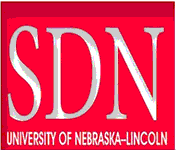Agricultural Leadership, Education, and Communication, Department of

Strategic Discussions for Nebraska
Date of this Version
2009
Document Type
Article
Citation
Strategic Discussions for Nebraska
College of Journalism and Mass Communications
133 Andersen Hall
University of Nebraska–Lincoln
Lincoln, Nebraska 68588-0443
Abstract
Nebraskans like where they live. Young and old, they like the
“sense of place” they feel here. They like being part of the legendary
work ethic. They like the fact that, for the most part, they
feel safe here. They like the fact that Nebraska agriculture helps
to feed and power the world.
But when people from other states ask them where they’re
from, they sound apologetic. The Strategic Discussions for
Nebraska team heard variations on that theme everywhere we
went. Caleb Pollard, Executive Director of the Ord Chamber of
Commerce said it best: “we need for Nebraskans to be proud.”
Nebraska is a conservative state, both politically and fiscally.
It is constitutionally required to balance the state budget. It is
also a state with only 1.7 million people, so there are few people
to share the property tax burden. Additionally, Nebraska doesn’t
have mineral resources that some states tax heavily, relieving the
property tax burden on individuals. However, Nebraska’s sales
and income taxes are about the same as its peer states, a fact that
is often overlooked when people share concerns about taxes.
One of the state’s main concerns is the declining work force,
particularly in greater Nebraska. This magazine contains several
stories that refer to the work force shortage and the challenges
faced by communities that desperately need workers.
Nebraska’s Strong Agricultural Base
Agriculture has changed in the last century, but it’s a booming
business and Nebraskans are knowledgeable about those
changes. They know the state is well-suited to growing highquality
crops and animals, and they know people in the rest of
the world want to buy them. They know the University of Nebraska’s
research has been important for Nebraska agriculture,
and they support the University of Nebraska-Lincoln’s Nebraska
Innovation Campus, which will be built in Lincoln on the site of
the Nebraska State Fair when the fair moves to Grand Island in
2010.
Nebraska exported nearly $5.5 billion dollars worth of agricultural
and manufactured goods in 2008. That’s up from $3.6
billion in 2006 and $4.2 billion in 2007. According to Greg
Ibach, Director of the Nebraska Department of Agriculture,
exports bring the state a steady flow of domestic and international
sales and allow the state to remain strong during financial
cycles that affect the U.S. and other countries. Nebraska
is fortunate to have not only the natural resources to produce
some of the best agricultural products – and can source
the needed parts and material for the manufactured products
– but also has the people with the needed background,
knowledge, experience and work ethic to produce the quality
products, Ibach said.
Importance of Education and Technology
There are no greater proponents of education than people in
greater Nebraska. The state’s education system is good and is
one of the drawing cards for businesses interested in locating
in the state.
Nebraskans know that jobs today and in the future will require
more knowledge of technology in all its forms. Whether
people work in information technology in Omaha, farm near
Cozad, ranch near Mullen, read x-rays in Ord, work on locomotives
in Alliance or conduct research in one of dozens of
locations in the state, they’ll have to know technology.
Technology requires consistent broadband access and
capacity that statewide, Nebraska just doesn’t have. A conversation
participant who lives outside North Platte told us
her satellite gives her access to the Internet “as long as it isn’t
cloudy.” That isn’t good enough for the needs of rural health
care, business development, education or for attracting young
people to smaller communities.
Infrastructure
If a state doesn’t have good infrastructure, it closes doors to
economic development and therefore, growth.
Infrastructure necessary for every viable community includes
water, sewer, electricity, roads and Internet access. Additional
infrastructure needs are schools, health care facilities,
power plants, transportation and communication.
It’s expensive to build these things and expensive to maintain
existing facilities. Dr. Doug Kristensen, Chancellor of the
University of Nebraska-Kearney, told us many of the state’s
school buildings were built about the same time – about 100
years ago – and are beginning to crumble, requiring extensive
and costly repairs or replacement.
Changing Nebraska’s Layout?
The Strategic Discussions for Nebraska team interviewed
a number of people who believe Nebraska should change its
county structure.
Ninety-three counties were needed when people had to use
a horse and buggy to get to the county seat, but some say the
state could save money if the counties were merged, creating
about 15 larger counties. Others say there would be few dollars
in savings and would widen the gap between greater Nebraska
and eastern Nebraska in accessibility to services.
Others suggest a “hub and spoke” regional layout, in which
one town would be the hub and about 10 or 12 smaller communities
would be the spokes. Trouble is, everybody wants to
be the hub.
What makes the most sense? Send your opinion to me at
sdn@unl.edu. We’ll post the results on the Strategic Discussions
for Nebraska website: www.unl.edu/sdn.
Leadership and Cooperation
People told us the state and communities need strong leaders
who are willing to partner with other organizations, communities,
states and countries for the good of Nebraska as a
whole. It also needs leaders who will consider the needs of the
entire state, regardless of money, power or special interests.
In this magazine, you will find a variety of perspectives on
Nebraska’s economy, including the opinions of state and community
leaders, academics, business owners and government
officials. Each opinion has value, based on the person’s experience,
education, location and economic condition.


Comments
Copyright University of Nebraska-Lincoln.